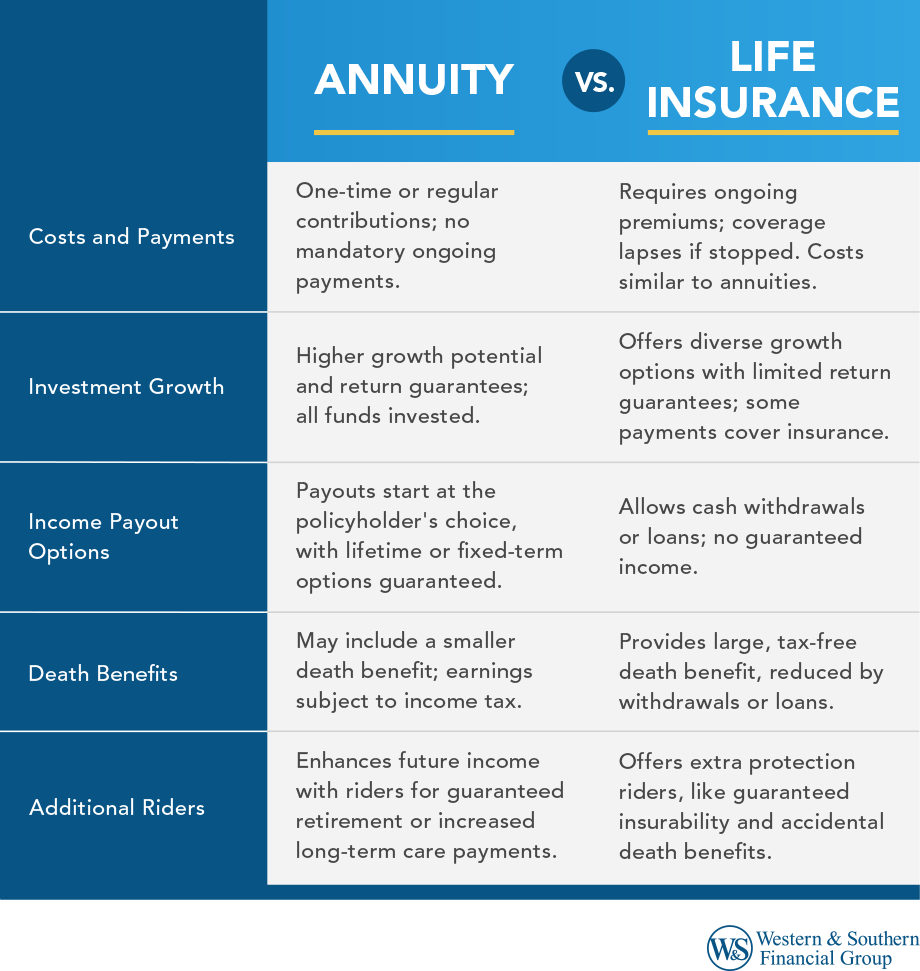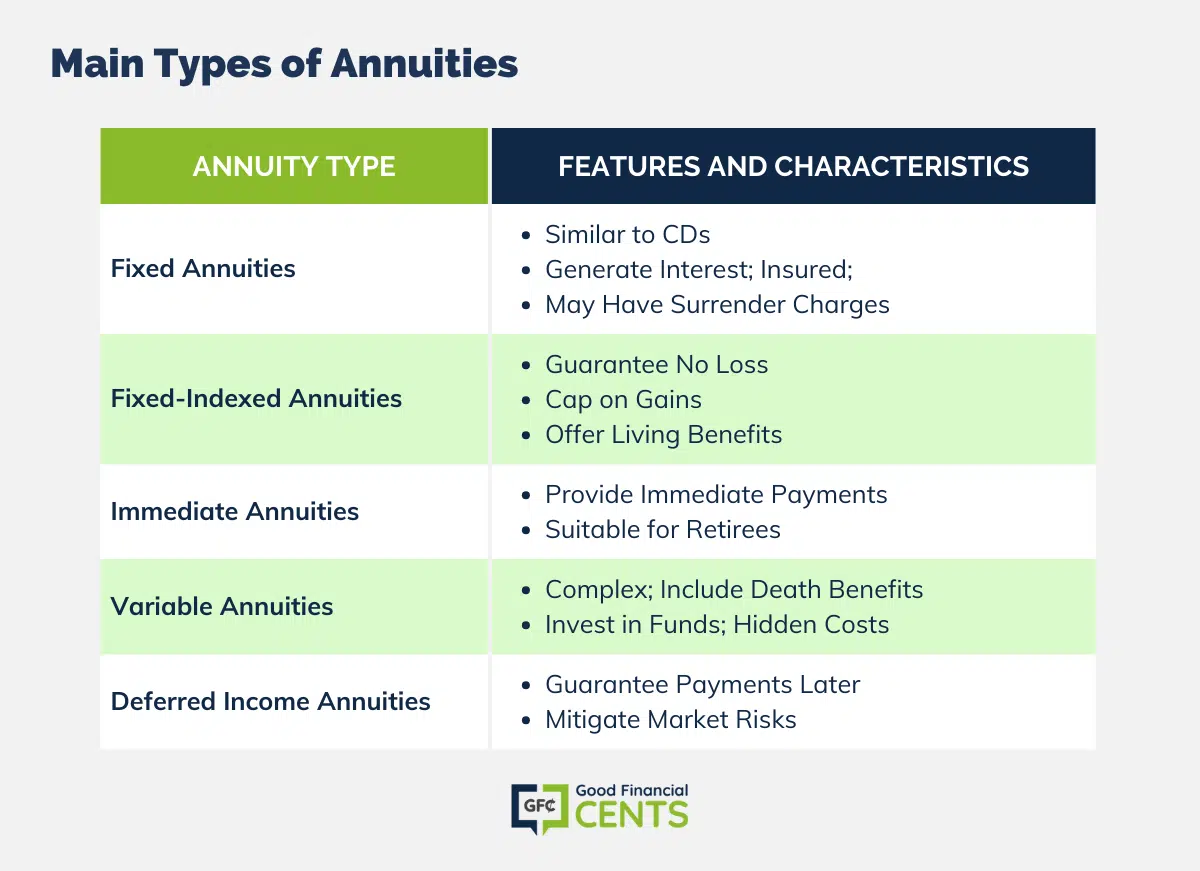All Categories
Featured
Table of Contents
The payment could be spent for development for an extended period of timea single premium postponed annuityor invested for a brief time, after which payment beginsa single premium prompt annuity. Single premium annuities are usually moneyed by rollovers or from the sale of a valued asset. A flexible premium annuity is an annuity that is planned to be funded by a collection of settlements.
Owners of fixed annuities understand at the time of their acquisition what the value of the future cash flows will be that are generated by the annuity. Undoubtedly, the number of capital can not be recognized beforehand (as this depends upon the agreement owner's life expectancy), yet the assured, dealt with passion price a minimum of provides the owner some level of certainty of future earnings from the annuity.
While this difference appears basic and straightforward, it can considerably affect the worth that a contract proprietor ultimately stems from his/her annuity, and it produces significant unpredictability for the agreement owner - Choosing an annuity provider. It additionally normally has a product influence on the level of fees that a contract proprietor pays to the providing insurance provider
Set annuities are commonly used by older financiers that have limited assets but who want to balance out the threat of outlasting their properties. Fixed annuities can act as a reliable tool for this function, though not without particular disadvantages. For instance, when it comes to instant annuities, when a contract has been bought, the agreement owner relinquishes any and all control over the annuity properties.
Highlighting the Key Features of Long-Term Investments A Closer Look at Fixed Income Annuity Vs Variable Annuity Breaking Down the Basics of Fixed Interest Annuity Vs Variable Investment Annuity Advantages and Disadvantages of Different Retirement Plans Why Choosing the Right Financial Strategy Matters for Retirement Planning What Is A Variable Annuity Vs A Fixed Annuity: Simplified Key Differences Between Different Financial Strategies Understanding the Rewards of Annuities Variable Vs Fixed Who Should Consider Strategic Financial Planning? Tips for Choosing Fixed Interest Annuity Vs Variable Investment Annuity FAQs About Planning Your Financial Future Common Mistakes to Avoid When Choosing Choosing Between Fixed Annuity And Variable Annuity Financial Planning Simplified: Understanding Fixed Annuity Or Variable Annuity A Beginner’s Guide to Fixed Annuity Vs Equity-linked Variable Annuity A Closer Look at How to Build a Retirement Plan
For instance, a contract with a regular 10-year abandonment period would bill a 10% surrender fee if the agreement was given up in the first year, a 9% surrender cost in the 2nd year, and so forth up until the surrender cost reaches 0% in the agreement's 11th year. Some postponed annuity contracts include language that allows for little withdrawals to be made at different periods throughout the abandonment period without penalty, though these allocations generally come at an expense in the form of lower guaranteed interest prices.
Simply as with a taken care of annuity, the owner of a variable annuity pays an insurance provider a round figure or collection of repayments for the guarantee of a collection of future repayments in return. However as discussed over, while a dealt with annuity grows at an ensured, constant rate, a variable annuity grows at a variable rate that relies on the performance of the underlying investments, called sub-accounts.
Throughout the buildup phase, properties bought variable annuity sub-accounts expand on a tax-deferred basis and are exhausted just when the agreement owner takes out those profits from the account. After the buildup stage comes the revenue stage. With time, variable annuity assets should theoretically raise in worth until the contract proprietor chooses she or he would like to start withdrawing money from the account.
The most considerable issue that variable annuities usually existing is high expense. Variable annuities have numerous layers of fees and costs that can, in aggregate, produce a drag of up to 3-4% of the contract's value each year.
M&E expenditure costs are calculated as a percent of the agreement worth Annuity companies pass on recordkeeping and various other administrative expenses to the contract proprietor. This can be in the type of a flat yearly fee or a percent of the agreement value. Administrative fees may be included as component of the M&E threat fee or might be analyzed individually.
These costs can vary from 0.1% for passive funds to 1.5% or more for proactively taken care of funds. Annuity contracts can be tailored in a variety of means to serve the certain requirements of the agreement owner. Some usual variable annuity bikers include assured minimal build-up benefit (GMAB), ensured minimum withdrawal advantage (GMWB), and assured minimal earnings advantage (GMIB).
Decoding What Is A Variable Annuity Vs A Fixed Annuity Key Insights on Variable Annuity Vs Fixed Annuity What Is Fixed Index Annuity Vs Variable Annuity? Benefits of Fixed Index Annuity Vs Variable Annuities Why Annuities Fixed Vs Variable Is a Smart Choice Fixed Income Annuity Vs Variable Annuity: Explained in Detail Key Differences Between Fixed Vs Variable Annuities Understanding the Rewards of Long-Term Investments Who Should Consider Annuities Variable Vs Fixed? Tips for Choosing Tax Benefits Of Fixed Vs Variable Annuities FAQs About Planning Your Financial Future Common Mistakes to Avoid When Planning Your Retirement Financial Planning Simplified: Understanding Fixed Vs Variable Annuity Pros And Cons A Beginner’s Guide to Fixed Annuity Or Variable Annuity A Closer Look at How to Build a Retirement Plan
Variable annuity payments provide no such tax obligation reduction. Variable annuities often tend to be highly ineffective cars for passing riches to the future generation since they do not enjoy a cost-basis modification when the initial contract owner dies. When the owner of a taxed investment account passes away, the cost bases of the investments held in the account are readjusted to show the market costs of those financial investments at the time of the owner's fatality.
Successors can acquire a taxed investment profile with a "clean slate" from a tax obligation point of view. Such is not the situation with variable annuities. Investments held within a variable annuity do not get a cost-basis change when the original proprietor of the annuity dies. This implies that any gathered latent gains will certainly be passed on to the annuity proprietor's beneficiaries, together with the linked tax concern.

One considerable problem connected to variable annuities is the capacity for disputes of rate of interest that might feed on the component of annuity salespeople. Unlike an economic consultant, who has a fiduciary duty to make financial investment choices that benefit the client, an insurance policy broker has no such fiduciary obligation. Annuity sales are very lucrative for the insurance policy specialists that sell them due to the fact that of high ahead of time sales payments.
Many variable annuity agreements have language which puts a cap on the percent of gain that can be experienced by particular sub-accounts. These caps prevent the annuity owner from totally taking part in a section of gains that could or else be enjoyed in years in which markets create substantial returns. From an outsider's point of view, it would appear that financiers are trading a cap on investment returns for the previously mentioned guaranteed floor on financial investment returns.
Breaking Down Fixed Income Annuity Vs Variable Growth Annuity Everything You Need to Know About Annuities Variable Vs Fixed Breaking Down the Basics of Investment Plans Features of Smart Investment Choices Why Annuities Variable Vs Fixed Is Worth Considering How to Compare Different Investment Plans: A Complete Overview Key Differences Between Different Financial Strategies Understanding the Key Features of Immediate Fixed Annuity Vs Variable Annuity Who Should Consider Strategic Financial Planning? Tips for Choosing the Best Investment Strategy FAQs About Pros And Cons Of Fixed Annuity And Variable Annuity Common Mistakes to Avoid When Planning Your Retirement Financial Planning Simplified: Understanding Your Options A Beginner’s Guide to Fixed Income Annuity Vs Variable Growth Annuity A Closer Look at Tax Benefits Of Fixed Vs Variable Annuities
As kept in mind above, give up fees can significantly restrict an annuity proprietor's ability to relocate assets out of an annuity in the very early years of the agreement. Additionally, while the majority of variable annuities permit contract proprietors to withdraw a defined amount during the buildup phase, withdrawals yet amount generally cause a company-imposed fee.
Withdrawals made from a set rate of interest financial investment choice might also experience a "market price adjustment" or MVA. An MVA readjusts the worth of the withdrawal to reflect any changes in rates of interest from the moment that the money was invested in the fixed-rate choice to the moment that it was withdrawn.

Frequently, even the salespeople who offer them do not totally comprehend just how they function, and so salespeople occasionally exploit a buyer's emotions to offer variable annuities instead of the merits and viability of the products themselves. We believe that financiers ought to completely understand what they have and exactly how much they are paying to possess it.
The very same can not be claimed for variable annuity possessions held in fixed-rate investments. These properties legitimately come from the insurer and would consequently be at risk if the company were to fail. Any type of warranties that the insurance policy business has agreed to supply, such as an assured minimum revenue benefit, would be in question in the event of an organization failing.
Exploring Retirement Income Fixed Vs Variable Annuity A Closer Look at How Retirement Planning Works What Is the Best Retirement Option? Benefits of Fixed Vs Variable Annuity Pros And Cons Why Choosing the Right Financial Strategy Matters for Retirement Planning Annuity Fixed Vs Variable: Simplified Key Differences Between Different Financial Strategies Understanding the Key Features of Annuity Fixed Vs Variable Who Should Consider Strategic Financial Planning? Tips for Choosing Pros And Cons Of Fixed Annuity And Variable Annuity FAQs About Planning Your Financial Future Common Mistakes to Avoid When Choosing a Financial Strategy Financial Planning Simplified: Understanding Fixed Index Annuity Vs Variable Annuity A Beginner’s Guide to Variable Vs Fixed Annuities A Closer Look at Fixed Indexed Annuity Vs Market-variable Annuity
Potential purchasers of variable annuities should recognize and take into consideration the economic problem of the providing insurance coverage firm before getting in right into an annuity agreement. While the benefits and drawbacks of numerous types of annuities can be discussed, the actual problem bordering annuities is that of suitability.
Nevertheless, as the claiming goes: "Customer beware!" This post is prepared by Pekin Hardy Strauss, Inc. ("Pekin Hardy," dba Pekin Hardy Strauss Wide Range Monitoring) for informational purposes just and is not intended as a deal or solicitation for company. The info and data in this write-up does not comprise legal, tax, accounting, financial investment, or other expert advice.
Table of Contents
Latest Posts
Exploring the Basics of Retirement Options Everything You Need to Know About Financial Strategies Defining Annuity Fixed Vs Variable Benefits of Choosing the Right Financial Plan Why Choosing the Righ
Analyzing Fixed Income Annuity Vs Variable Annuity A Closer Look at Fixed Annuity Vs Equity-linked Variable Annuity Breaking Down the Basics of Variable Vs Fixed Annuities Pros and Cons of Fixed Vs Va
Breaking Down Your Investment Choices Everything You Need to Know About Fixed Vs Variable Annuities Defining the Right Financial Strategy Pros and Cons of Fixed Index Annuity Vs Variable Annuities Why
More
Latest Posts